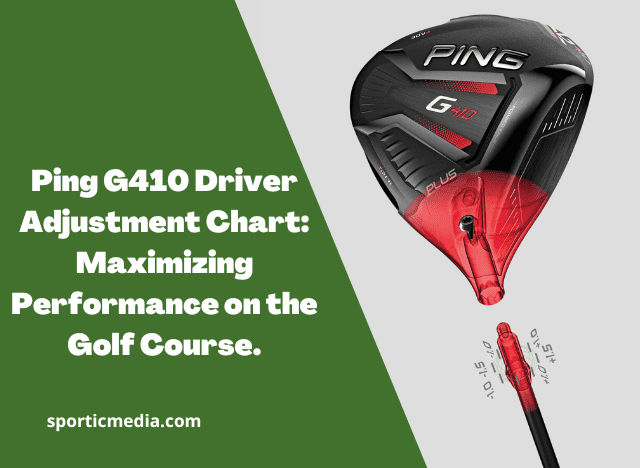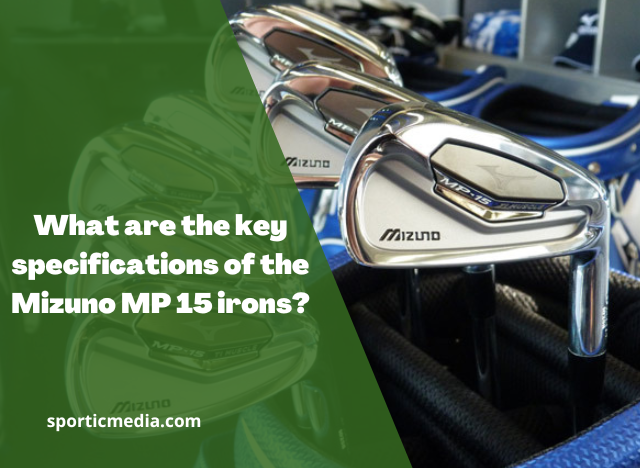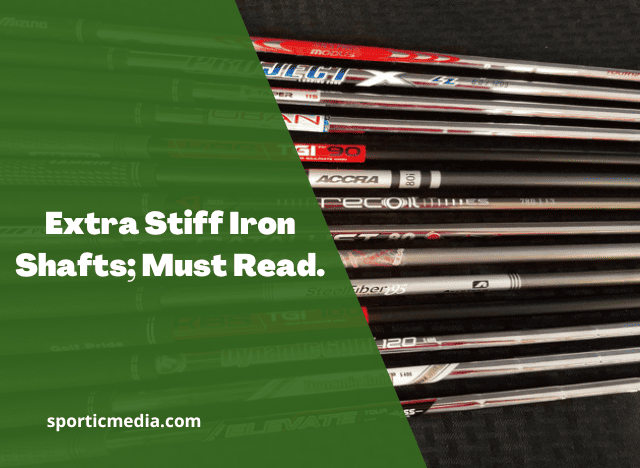Let’s be honest—buying new golf clubs can get confusing. There are so many options out there, and if you don’t know what to look for, it’s easy to make the wrong choice. One of the most important things you need to understand when picking new clubs is the shaft. More specifically, the shaft flex, material, weight, and length—because all of these things affect how you hit the ball.
If your shaft doesn’t match your swing, it can mess up everything: distance, accuracy, consistency—even how the club feels in your hands.
But don’t worry. This article breaks everything down in super simple terms so that you can understand what type of shaft you need and how to get one that actually helps your game.
A quick guide before we begin

Golf Shaft Selection Guide
Choose the Right Golf Shaft
Your complete guide to better golf through proper shaft selection
! Why Your Shaft is the “Engine” of Your Club
The shaft controls how energy transfers from your swing to the ball. Wrong shaft = problems with distance, accuracy, and consistency.
📊 Shaft Flex Guide
Match your driver swing speed to the right flex:
Pro Tip: Get your swing speed checked at a local golf shop – it’s usually free!
⚖️ Steel vs. Graphite Shafts
✓ Great for irons
✓ Better for fast swings
✗ Heavier (90-130g)
✓ Easier to swing fast
✓ Better shock absorption
✓ Great for drivers/woods
⚡ Shaft Weight Impact
40-60g: Good for slower swing speeds, more distance
90-130g: Good for stronger players, tighter shot patterns
💡 Quick Selection Tips
Shorter shafts = more control. Even pros use 44.5″ drivers instead of 45.5″ for accuracy.
Choose the flex that helps you play better, not the one that sounds cooler.
Many golfers use graphite in drivers/woods and steel in irons.
Professional fitting can make a HUGE difference in your game.
Ready to Improve Your Game?
The right shaft can help you hit straighter, gain distance, and feel more confident.
Why the Shaft Matters More Than You Think
You’ve probably heard the shaft being called the “engine” of the golf club—and that’s for a good reason. While the clubhead is important, the shaft is what connects you to the ball. It controls how energy from your swing is transferred into the shot.
If the shaft is too stiff or too soft, too heavy or too light, too long or too short—you’ll start to see problems like:
- Shots going offline
- Loss of distance
- Trouble with ball striking
- Less control over your shots
So yes, the shaft really matters.
Let’s Start With Shaft Flex (And What It Means for You)
Shaft flex basically means how much the shaft bends when you swing. There are five main types:
- Extra Stiff (X-Stiff)
- Stiff (S)
- Regular (R)
- Senior (A or M)
- Ladies (L)
The faster your swing speed, the stiffer your shaft should be. Here’s a simple chart to help you figure it out based on your driver swing speed:
| Swing Speed | Recommended Flex |
|---|---|
| 105+ mph | Extra Stiff (X) |
| 97–104 mph | Stiff (S) |
| 84–96 mph | Regular (R) |
| 72–83 mph | Senior (A/M) |
| < 72 mph | Ladies (L) |
If you don’t know your swing speed, you can get it checked at a local golf shop using a launch monitor. It’s usually quick and free.
Important: Your swing speed with a driver may not match your iron swing speed. So don’t assume one shaft flex fits all clubs.
Why Getting the Wrong Flex Messes Things Up
Many golfers use shafts that are too stiff. Why? Ego.
Nobody wants to admit they might need a regular or senior shaft when their buddies are using stiff ones. But if the shaft is too stiff for your swing speed, the club won’t flex properly—and you’ll probably:
- Miss right (for right-handed golfers)
- Struggle to get the ball in the air
- Lose distance
On the flip side, if the shaft is too soft, it can:
- Hook the ball left
- Feel uncontrollable
- Cause inconsistent ball flights
So, be honest about your swing. Choose the shaft that helps you play better, not the one that sounds cooler.
Steel vs. Graphite Shafts: Which One Should You Use?
Both materials have their pros and cons. Here’s a basic breakdown:
Steel Shafts
- Heavier (90g to 130g)
- More control and feel
- Great for irons
- Best for stronger players with faster swing speeds
Graphite Shafts
- Lighter (40g to 90g)
- Easier to swing faster
- More shock absorption (great for people with injuries)
- Often used in drivers, fairway woods, and hybrids
- Becoming more common in irons too
If you want more speed and distance, or you have any wrist/elbow injuries, graphite might be the better option. If you want precision and can handle a bit more weight, steel is a solid choice.
Nowadays, many golfers use graphite shafts in their drivers and woods and steel shafts in their irons. But you can mix and match based on your swing and preferences.
What About Shaft Weight?

Weight plays a huge role in how the club feels during the swing.
- Lighter shafts (40g to 60g) help you swing faster. Good for slower swing speeds or if you want more distance.
- Heavier shafts (90g to 130g) help with control. Good for stronger players who want tighter shot patterns.
Your fitter (or launch monitor data) will help you decide what weight gives you the best balance of speed and control.
Shaft Length: Does Longer Mean Better?
Longer shafts can give you more swing speed—and maybe more distance. But they also make it harder to hit the sweet spot.
Most drivers today come with a shaft around 45.5 inches. But some pros actually use shorter shafts—like 44.5 inches—because they want more control and accuracy.
If you struggle to hit fairways or feel like your drives are inconsistent, try a slightly shorter shaft. It could help you hit the ball more solidly—even if your swing speed drops a little, your overall distance might actually go up because you’re hitting the ball better.
Shaft Torque and Bend Profile: Small Details That Matter
These are more advanced terms, but let’s keep it simple:
Torque = how much the shaft twists during the swing.
- Low torque (2–3 degrees) = more stable, better for fast swings.
- High torque (4–5+ degrees) = more “whippy,” good for slower swings or more feel.
Bend Profile = where the shaft bends the most.
- Stiff tip = lower ball flight, less spin (good for fast swings).
- Soft tip = higher launch, more spin (good for slower swings).
If this stuff sounds confusing, don’t worry too much. A good fitter will handle all this for you during a custom fitting.
So, Should You Get Custom Fitted?
Short answer: Yes.
A professional club fitting can make a HUGE difference in your game. Here’s what happens during a fitting:
- They measure your swing speed, ball speed, launch angle, spin rate, etc.
- You try different shafts (flexes, weights, materials).
- You see instant results on a launch monitor.
- They recommend a shaft that improves your numbers—and your feel.
Even if you don’t buy custom clubs right away, you’ll walk away knowing what works for your swing. That alone is worth it.
But What If You Can’t Get Fitted Right Now?
That’s okay. Here’s what you can do:
- Find out your swing speed. Use a launch monitor at a local shop or even some driving ranges.
- Match it to a shaft flex using the chart earlier in this article.
- Think about your current clubs. Are they too heavy? Too light? Too long? How do they feel?
- Look for trusted brands that offer different weight and flex options (like Fujikura, Mitsubishi, KBS, True Temper, etc.).
- Start small. Even upgrading your driver shaft first can lead to big improvements.
Final Thoughts: Don’t Ignore the Shaft
When golfers think about improving their game, they usually focus on changing the clubhead or buying a new putter. But the truth is, the shaft might be the most important piece of your golf club.
It’s the thing that connects your body to the ball. If it’s not working with your swing, everything else falls apart—no matter how expensive or “high-tech” your clubhead is.
So if you’re serious about playing better golf, take the time to get the shaft right. Whether you go for a full fitting or just start with your swing speed and flex chart, getting this part of your gear right will help you:
- Hit the ball straighter
- Gain more distance
- Feel more confident with every swing
And in the end, that’s what we’re all looking for—more fairways, better scores, and more fun on the course.
Discover the meticulous and expert-driven process behind our product reviews at Sportic Media. Our comprehensive guide, led by industry veterans, ensures you get the most reliable and detailed insights into golf equipment. Dive into our methodical approach by visiting How We Test Products at Sportic Media: A Comprehensive Guide
.




